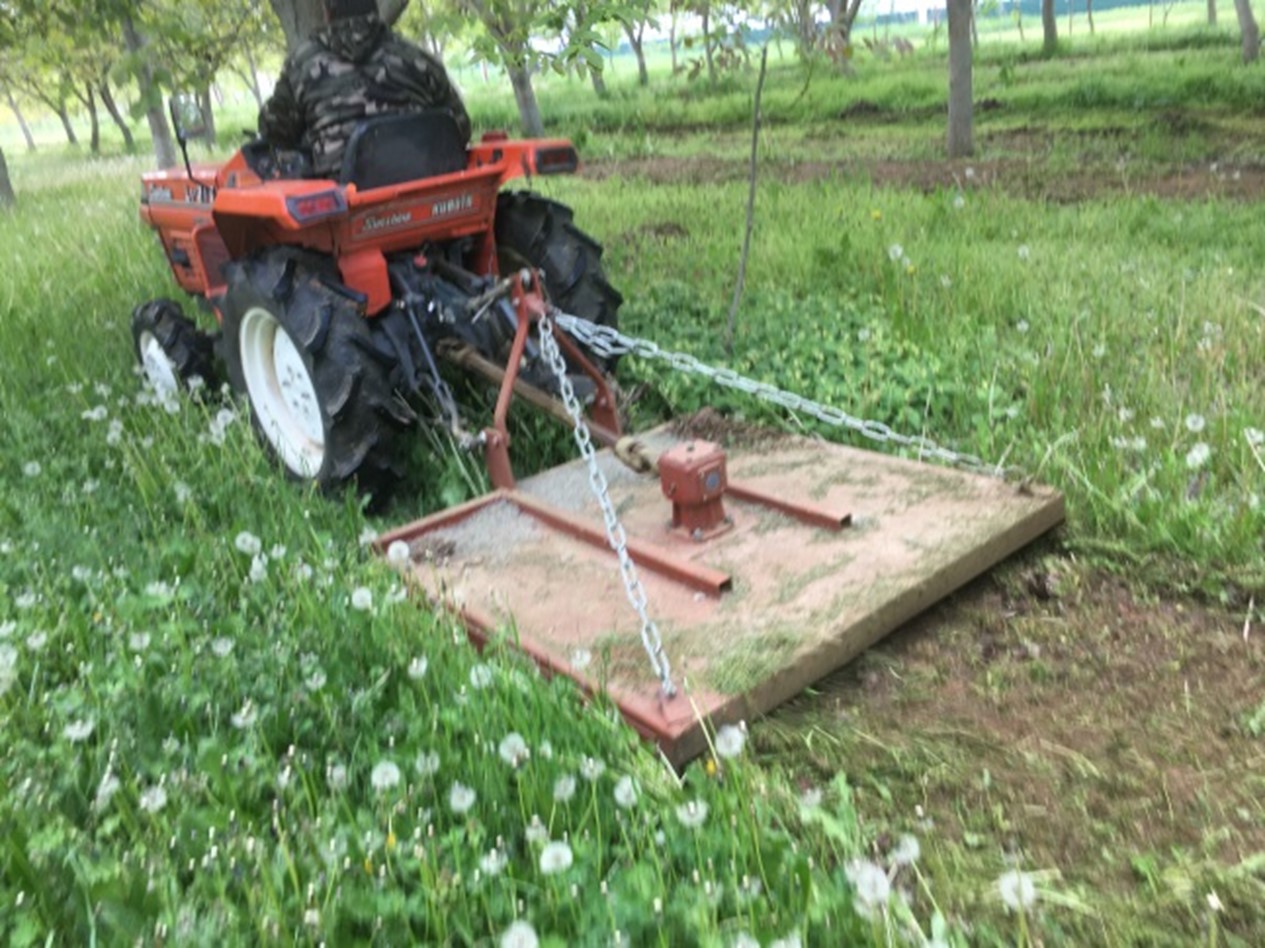The Advantages of Maintaining Natural Vegetation in Tree Crops

This post is also available in:
This post is also available in:
![]() Español (Spanish)
Español (Spanish) ![]() Ελληνικά (Greek)
Ελληνικά (Greek)
The primary purpose of agriculture is to use solar energy to produce products that meet people’s needs. The energy of the sun that falls on the foliage of trees and shrubs is harnessed by them, producing new vegetation and fruit.
At the same time, however, it also falls on the ground and is taken up by native vegetation. These plants exploit the sun’s power with the same mechanisms in order to produce new vegetation. This plant mass that is produced can be taken up and exploited by soil micro-organisms, earthworms, and others of the soil ecosystem when it is cut down. These organisms convert the cut plant parts into organic nutrients, which can be taken up directly by the roots of trees and shrubs.
Therefore, maintaining natural turf that is cut from time to time enables the maximization of the use of solar energy for the benefit of the trees in a fruit orchard (offering many advantages) and for improving soil health. Typical examples of such native species are poa, dandelion (taraxacum), mustard (bramble), Lolium, and others.
How natural turf can be beneficial in an orchard
Advantages of maintaining native vegetation in tree crops
- Reduction of soil overheating: Native vegetation acts thermoregulatory in two ways: It protects the soil from direct exposure to the sun but also retains more water.
- Improving soil porosity.
- Soil protection: Maintaining turf protects and improves the physical properties of the soil as it protects it from erosion (water and/or wind) and reduces the risk of compaction.
- Facilitate both the entry and retention of water in the soil: This also reduces the need for irrigation and improves efficiency. Maintaining soil moisture at ideal plant growth levels can contribute significantly to plant vigor and avoid water stress.
- Providing a favorable environment for beneficial micro-organisms, earthworms, and larger organisms such as insects, reptiles, and small mammals that effectively help to control important crop pests naturally.
- Increase soil organic matter and reduce the risk of leaching or runoff of nutrients (mainly nitrogen and phosphorus).
- Recycling of valuable nutrients.
- Reduction in production costs for the farmers. Less synthetic fertilizer is required since the soil is enriched with nutrients naturally. In addition, the need for herbicide applications is reduced, leading to a more sustainable way of cultivating while, at the same time, the beneficial insects are protected.
Finally, as a result of the above:
– we have increased yields.
Mowing of native vegetation is recommended 2-4 times a year when the plants reach 10 to 15 cm in height and before they have time to flower.

Suitable plant species for cover crops
Where there is no natural native vegetation or for other reasons, the farmer can choose to sow a cover crop to have the advantages mentioned above. There are usually two options for cover crops; legumes or grasses (or a mix of both). If the crop is a legume (such as vetch, alfalfa, or fodder bean), the soil is enriched with nitrogen since the plants can capture nitrogen and transform it into a form easily absorbed by the plants. However, if grass species, like oat or barley, are used, they can absorb the residual nitrogen left in the field (e.g., from an application), preventing leaching or runoff of the nutrient.
Just before the legumes reach (full) bloom, the plants are incorporated into the soil. Alternatively, they can be cut with a lawnmower and left on the soil surface.
– For legumes, nitrogen uptake is:
- Alfalfa (2.2 kg/ha or 2 lb/acre),
- Vetch (0.9-2 kg/ha or 0.8-1.8 lb/acre),
- Lupine (1.7 kg/ha or 1.5 lb/acre),
- Melilot (1.3 kg/ha or 1.16 lb/acre),
- Lentil (1.2 kg/ha or 1.1 lb/acre),
- Vigna (1 kg/ha or 0.9 lb/acre)
Legumes can also be combined with grasses in a mix such as oats or barley and/or grasses such as Lolium, poa, and fescue.
What should we look out for when periodically cutting natural vegetation?
Periodic cutting of turf can alter the composition of the plant population that makes up the turf. The more diverse plant species that make up the native vegetation on the field, the better. Periodic cutting favors the native vegetation, which propagates by rhizomes, and harms vegetation which propagates by seeds, as many of these species are cut before their seeds are even produced.
In order to combat this phenomenon, we propose and implement on our estate to maintain a narrow strip of vegetation in the middle of the corridors (between plant rows) or at the borders of the field. Hence, the annuals reproduce by seeds, can complete their life cycle, and maintain a rich population, as shown in the relevant photo above.
The maintenance of native vegetation during the summer months should be done with care and, in some cases, should be avoided in crops with an increased fire risk or, better still, cut more frequently.
References
- https://www.uvm.edu/~orchard/fruit/treefruit/tf_horticulture/AppleHortBasics/Readings/WI_groundcover.pdf
- https://intermountainfruit.org/orchard-floor/management
Bączek P, Halarewicz A. Allelopathic Effect of Black Cherry (Prunus serotina Ehrh.) on Early Growth of White Mustard (Sinapis alba L.) and Common Buckwheat (Fagopyrum esculentum Moench): Is the Invader a Threat to Restoration of Fallow Lands? Agronomy. 2022; 12(9):2103. https://doi.org/10.3390/agronomy12092103








































































